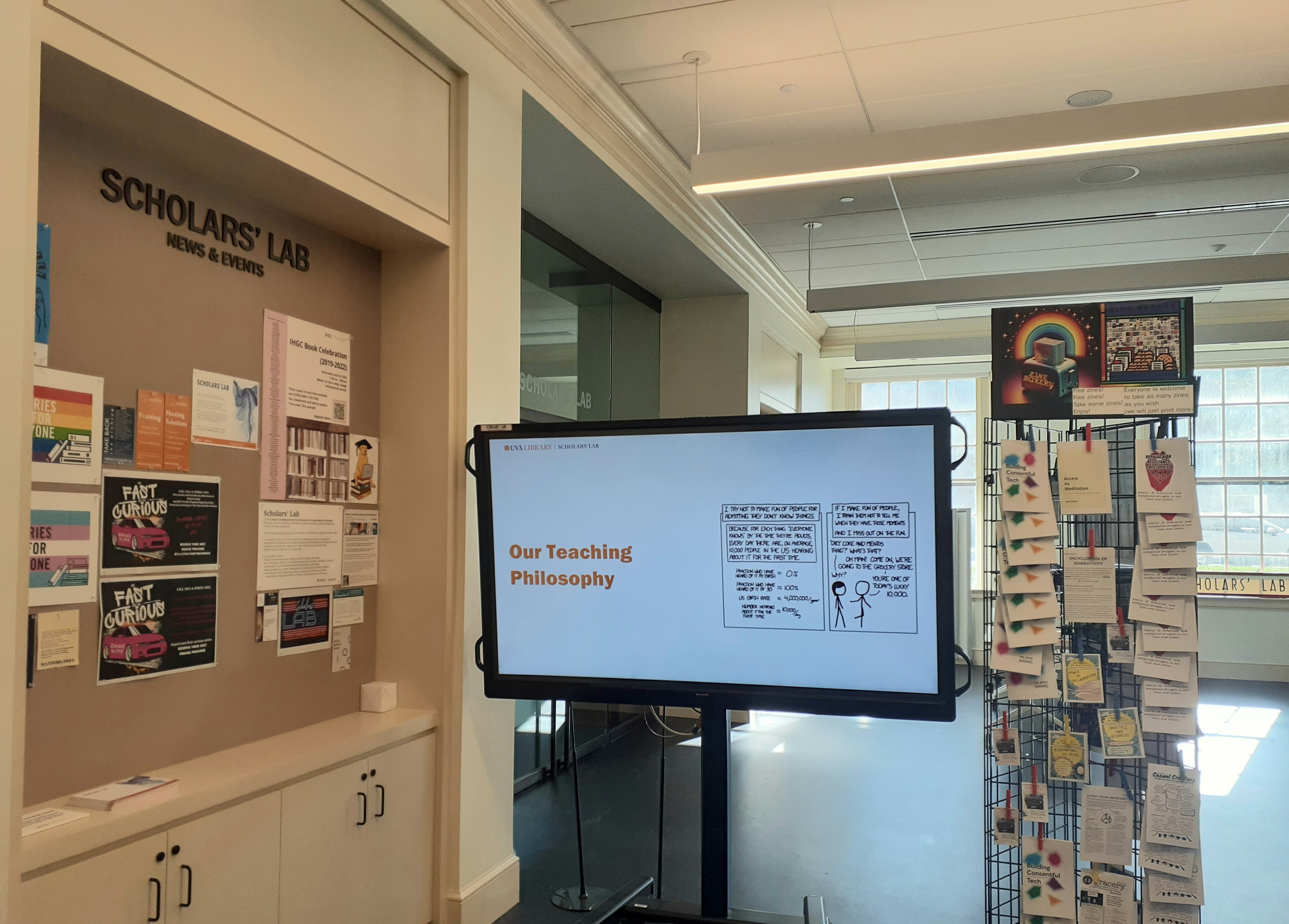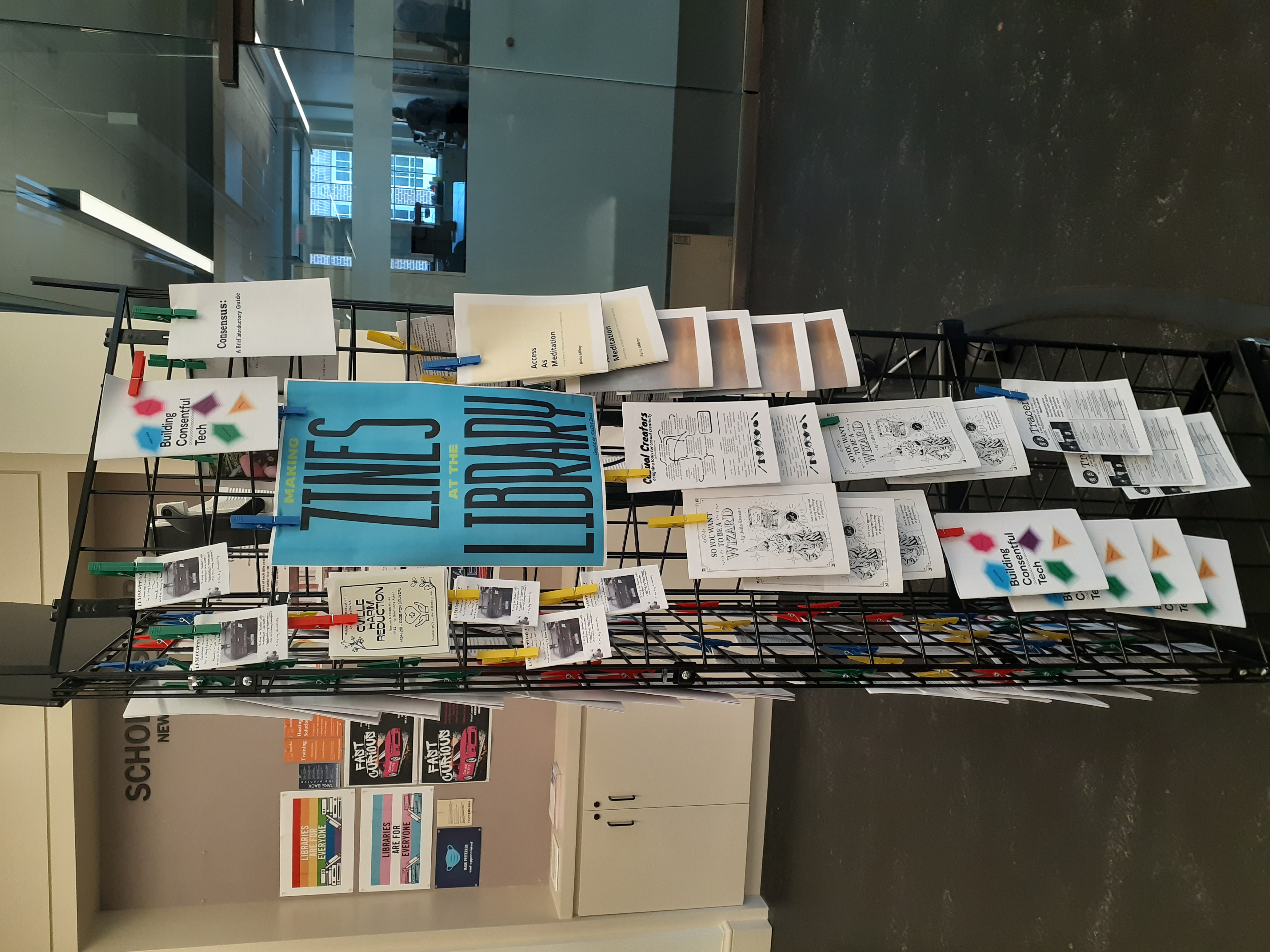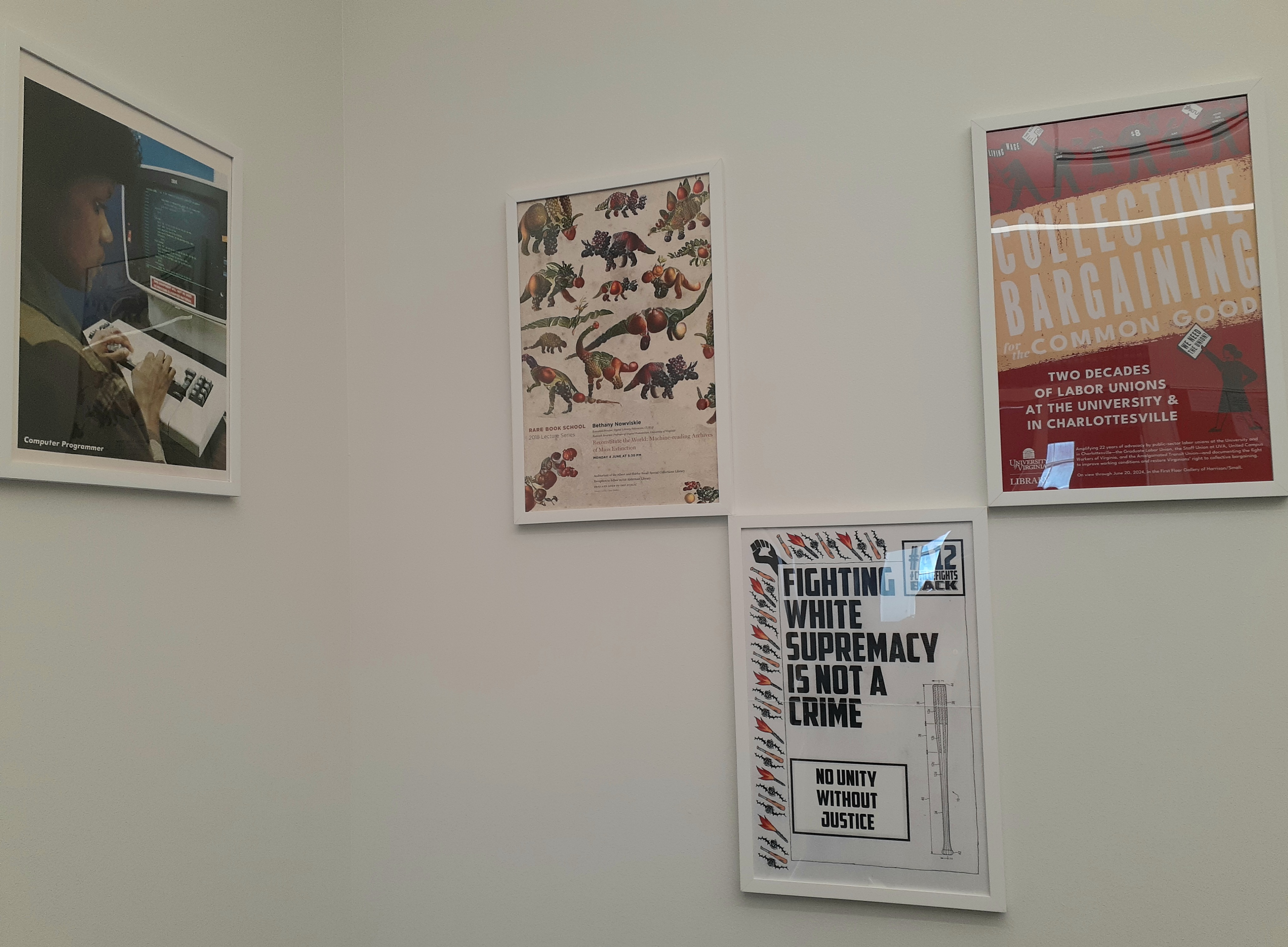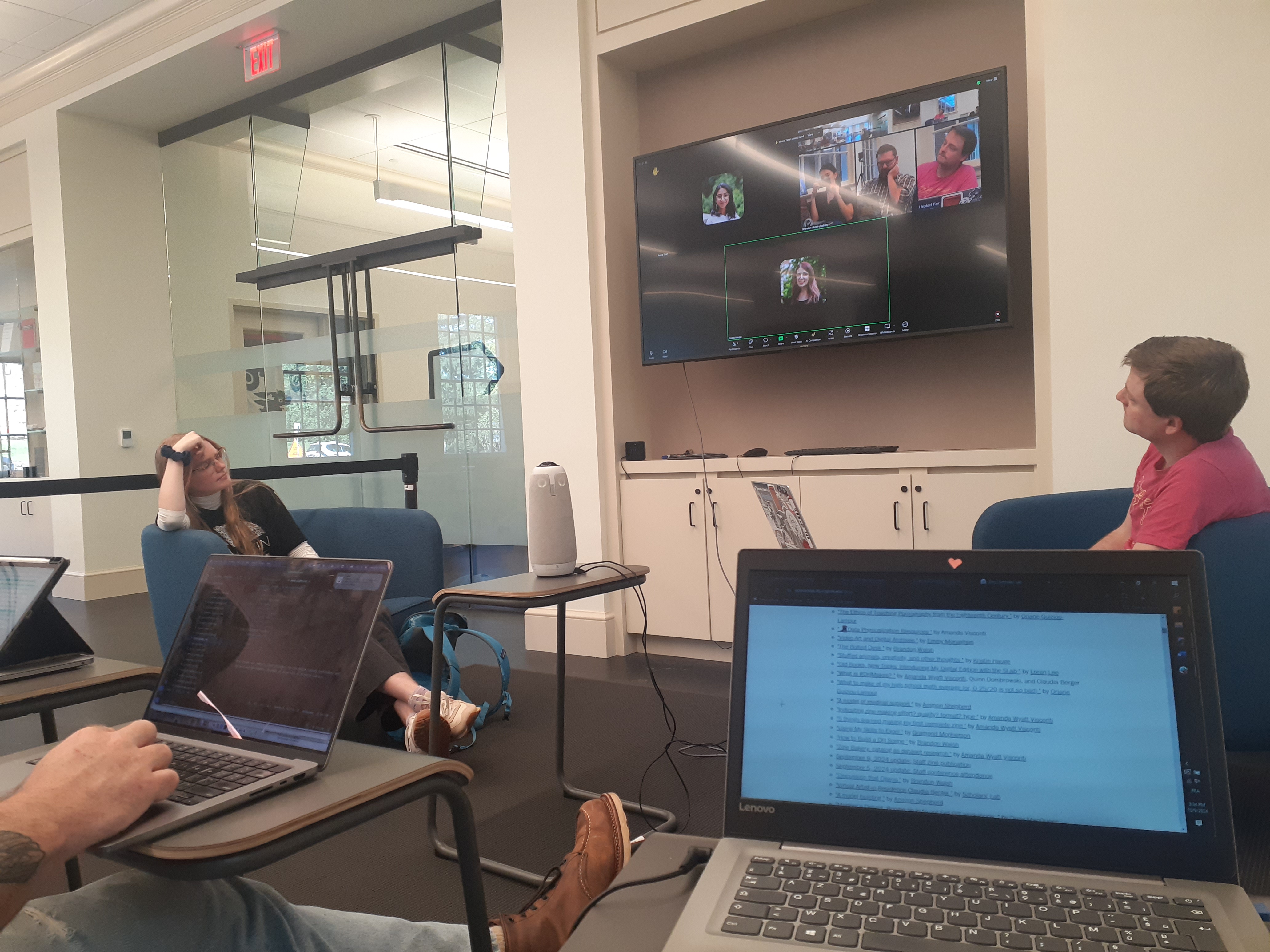The space of DH as intention
This post is inspired by ‘“The Bolted Desk”’, written by Brandon Walsh. A sentence in particular keeps haunting me: “Where the chairs spoke of quiet restraint, their surfaces told a different story, narrating favorite bands, quotations, weekend adventures, and more. Freedom. Flexibility. Movement. Waiting to get out of the chair”. Here, Brandon opposes the chair as limitation and constraint, and the desk as a means to escape, to resist, to free oneself from not only what the chair is, but also what it represents.
As we found ourselves thinking about our Charter and what we were ready to commit to for the duration of the year together, I went back to this article and to the idea of the “bolted desk”. I expressed to the other Fellows a concern I had. As a TA, you learn that as soon as you make something mandatory, students will dread it, as apparently appealing as it seem. Similarly, I felt that convening of a specific time where we would meet each time could be theoretically beneficial, but concretely ineffective – especially as, because one of us lives a few hours from Charlottesville, there were only two days of the week where we could potentially meet up (and that excludes classes and other personal commitments). Shifting the concern from time to space, I suggested we could commit to hanging out in the Fellows’ Lounge as much as we could before or after Praxis, something we had started doing from the start of semester anyway.
After all, we are the first Praxis cohort to get to enjoy the fully renovated Scholars’ Lab and Shannon Library, which means that we are also the first cohort to experiment with a space dedicated to our needs. Amanda, Brandon, Jeremy and the rest of the Scholar’s Lab people are vocal about hearing our suggestions, in order to make the Fellow’s Lounge a space where we feel comfortable and accepted. Here, I have to single someone out and personally thank Amanda for their perpetual efforts in making the Scholars’ Lab space inclusive.
Creating a space where all students (especially students from minorities) feel included, is not an easy task. When I talked to Brandon about the Fellow’s space, he summed up my feelings perfectly: everything in the room, from posters to furniture, was “intentional”. Spatial inclusivity is the embodiment of an idea, not just the sign of mere decoration but the means to a deep connection and interaction.
Thinking of ideas to make the Fellow’s Lounge even more of our own, here are a few suggestions I collected:
- Praxis memento, so that each fellow leaves a trace of their passage here, for the future cohorts to add on to
- A yoga mat and yoga block
- A few cushions and a throw
- A coat rack
- Even more snacks!
- A poster (as opposed to a screen, for sustainability reasons) of a view, as there are no windows in the Fellow’s space (although some can argue that knowledge is already a window to the world…)




